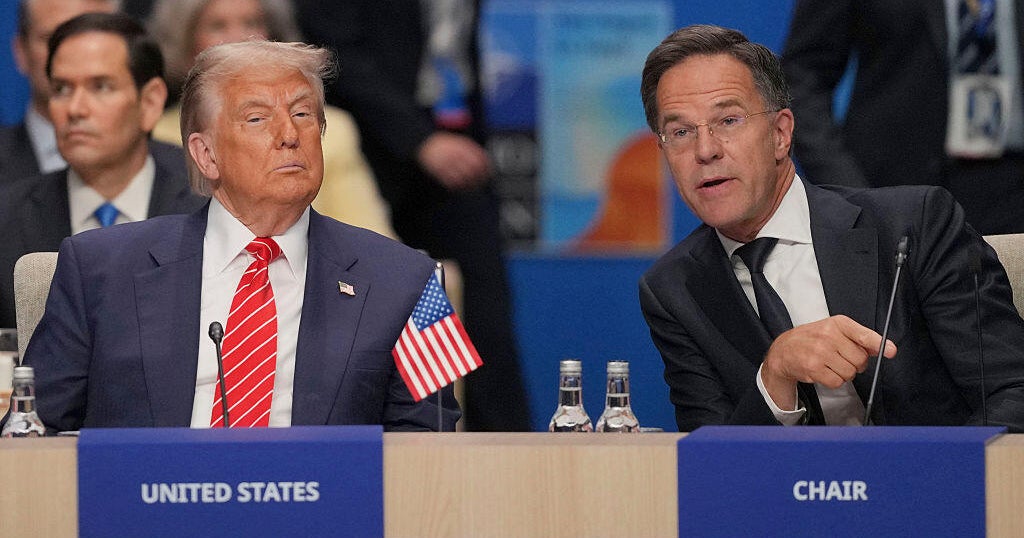NATO Secretary General Mark Rutte is poised to meet with U.S. President Donald Trump in Washington, D.C. on July 14 and 15, a gathering that resonates far beyond the confines of diplomatic protocol. This strategic meeting aligns with the United States' recent announcement regarding the sale of weaponry to NATO allies, enabling these nations to bolster support for Ukraine amid its ongoing struggle against Russian aggression. The implications of this partnership are profound, indicating a shift toward
Did You Know
Octopuses have three hearts and blue blood.
?
AD
heightened military collaboration among NATO members at a time of escalating global tension.
Trump's indication that NATO countries will pay full price for American weaponry introduces a new layer to the alliance's financial dynamics. This approach reflects a growing expectation for European nations to shoulder a greater responsibility in their defense initiatives. As Russia continues to challenge the stability of Eastern Europe, the U.S. is preparing to reinforce its commitment to NATO, ensuring that allies have the necessary resources to confront emerging threats effectively.
The discussions are likely to extend beyond mere transactions of arms, as key figures such as Secretary of State Marco Rubio and Secretary of Defense Pete Hegseth are anticipated to join these talks. The involvement of senior administration officials emphasizes the urgency and significance of this meeting in shaping NATO’s future strategy. As the leaders convene, they will navigate complex geopolitical landscapes, transforming rhetoric into actionable plans that underscore the alliance's determination to support Ukraine and fortify collective security in the face of adversity.
Q&A (Auto-generated by AI)
What are NATO's current military commitments?
NATO, or the North Atlantic Treaty Organization, currently focuses on collective defense, crisis management, and cooperative security. Its primary commitment is to Article 5 of the NATO Treaty, which states that an attack on one member is an attack on all. NATO has deployed forces in Eastern Europe to deter aggression, particularly from Russia, and continues to support operations in Afghanistan and other regions. Additionally, NATO is involved in various training and advisory missions to enhance the capabilities of partner nations.
How do U.S. weapon sales impact Ukraine?
U.S. weapon sales significantly bolster Ukraine's defense capabilities, particularly in its ongoing conflict with Russia. By providing advanced weaponry, the U.S. aims to enhance Ukraine's military strength, enabling it to better defend its sovereignty. These sales also signal U.S. support for Ukraine, potentially deterring further Russian aggression. However, they can escalate tensions in the region, prompting a need for careful diplomatic balancing to avoid broader conflict.
What is the history of U.S.-NATO relations?
U.S.-NATO relations date back to NATO's founding in 1949, aimed at countering Soviet influence during the Cold War. The U.S. has been a leading member, providing military and financial support. Over the decades, NATO has adapted to new security challenges, including terrorism and cyber threats. The post-Cold War era saw NATO's expansion into Eastern Europe, with the U.S. playing a crucial role in integrating former Soviet states, reinforcing its commitment to collective defense and transatlantic unity.
What are the implications of landmine treaties?
Landmine treaties, such as the Ottawa Treaty, aim to eliminate anti-personnel mines due to their humanitarian impact. Countries that sign these treaties commit to banning the use, production, and transfer of such mines. The implications include reducing civilian casualties and promoting post-conflict recovery. However, when countries, like Finland, withdraw from these treaties, it raises concerns about a potential resurgence in landmine usage, complicating international security and humanitarian efforts.
How does Trump's foreign policy differ from predecessors?
Trump's foreign policy is characterized by an 'America First' approach, emphasizing national sovereignty over multilateralism. Unlike previous administrations that prioritized alliances and international cooperation, Trump often questioned NATO's relevance and sought to reduce U.S. military commitments abroad. His administration focused on bilateral agreements and trade negotiations, reflecting a shift towards a more transactional diplomacy that sometimes strained traditional alliances.















